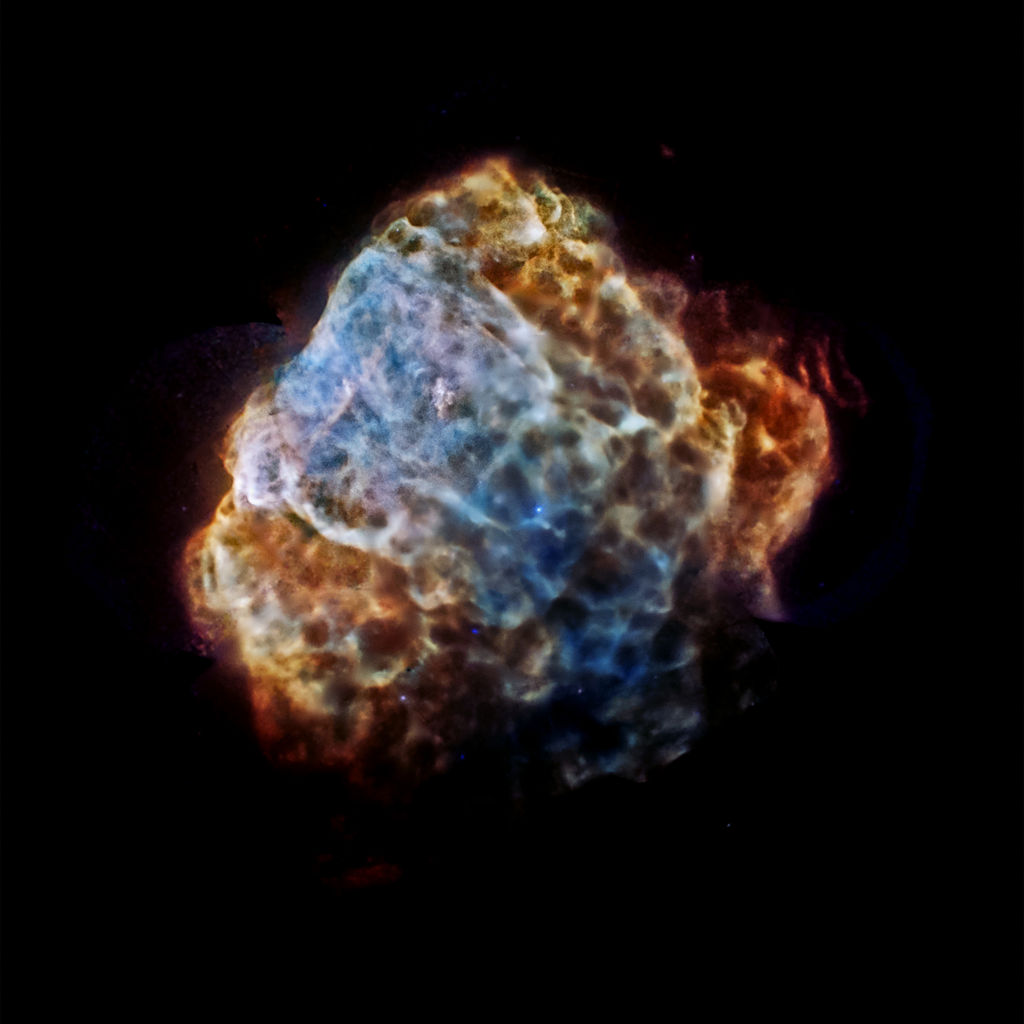SuperNova-PuppisA-XRay-20140910
The image shows the remains of a supernova that would have been witnessed on Earth about 3,700 years ago. The remnant is called Puppis A, and is around 7,000 light years away and about 10 light years across. This image provides the most complete and detailed X-ray view of Puppis A ever obtained, made by combining a mosaic of different Chandra and XMM-Newton observations. Low-energy X-rays are shown in red, medium-energy X-rays are in green and high energy X-rays are colored blue.
These observations act as a probe of the gas surrounding Puppis A, known as the interstellar medium. The complex appearance of the remnant shows that Puppis A is expanding into an interstellar medium that probably has a knotty structure.
Supernova explosions forge the heavy elements that can provide the raw material from which future generations of stars and planets will form. Studying how supernova remnants expand into the galaxy and interact with other material provides critical clues into our own origins.
A paper describing these results was published in the July 2013 issue of Astronomy and Astrophysics and is available online. The first author is Gloria Dubner from the Instituto de Astronomía y Física del Espacio in Buenos Aires in Argentina.Relevante Bilder
Relevante Artikel
Puppis APuppis A ist ein Supernovaüberrest im Sternbild Puppis. Er entstand durch eine Supernova-Explosion, deren Licht die Erde vor 3700 Jahren erreichte. Der Supernovaüberrest überdeckt sich scheinbar mit dem der Vela-Supernova, ist aber viermal so weit entfernt. .. weiterlesen

